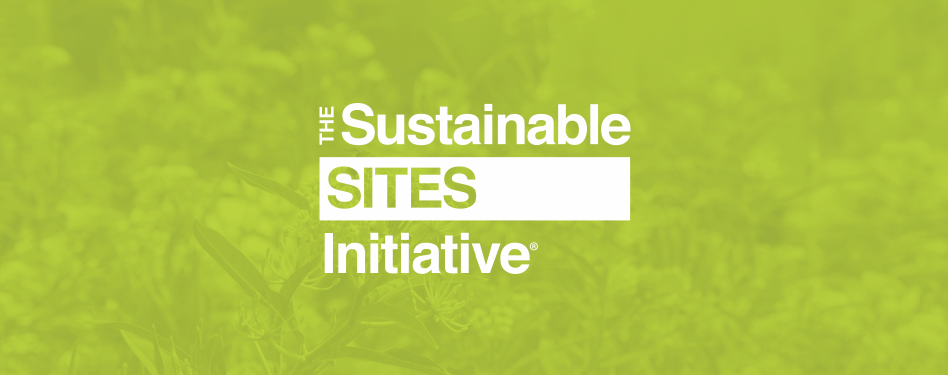
As the world’s population grows, so does the rate of global urbanization and development. What is built on the land directly correlates to the impacts on ecological systems and to the health, safety and welfare of our communities.
Far too often, however, land and building projects are designed without regard to their harmful impact on scarce resources, ecological systems or the quality of life in the community. With land as a crucial component of the built environment, the SITES v2 Rating System provides a systematic and comprehensive set of guidelines and benchmarks that help elevate the value of a landscape. Providing a framework to help plan, design, develop and maintain landscapes, the SITES v2 Rating system helps projects to avoid, mitigate and even reverse detrimental impacts of built landscapes.
By aligning land design and development practices with the functions of healthy ecosystems, the SITES program demonstrates how developers, property owners, landscape architects, planners and more have the power to protect, restore and enhance ecosystem services. Elements of the SITES v2 Rating system can help professionals create spaces that are healthier and safer for their communities.
Want to learn more about how SITES creates healthier and happier places to live and work? We’ve rounded up a list of a few credits within the SITES Human Health and Well-Being credit category to help get you the information you need:
Credit 6.2: Provide Optimum Site Accessibility, Safety and Wayfinding
The goal of this credit is to increase users’ ability to understand and access outdoor spaces by incorporating elements of accessibility, safety and wayfinding into the site design. Studies have shown that providing optimum site accessibility, safety and wayfinding in an integrative design approach creates a sense of security, connection, social interaction, and quality of life improvement through the reduced fear of crime and ease of navigation. These features also attract a higher and broader spectrum of customers to businesses contributing to a vibrant economic community.
Credit 6.3: Promote Equitable Site Use
The goal of this credit is to provide economic and social benefits to the local community. This starts with identifying the needs and desires of site users and stakeholders during the pre-design stage. Providing free public access to on-site events, facilities, amenities or programming are some of the ways the project gives back to its community and addresses social equity.
Credit 6.4: Support Mental Restoration
Experiences provided by nature are inherently restorative. Mental fatigue and stress caused by noise or long periods of focus can result in irritability, loss of productivity or anxiety. This credit addresses those issues by providing accessible, quiet outdoor spaces and unobstructed views of vegetation, to capitalize on the restorative benefits of these natural connections.
Credit 6.5: Support Physical Activity
This credit aims to provide opportunities for on-site physical activity. According to the Centers of Disease Control and Prevention, daily moderate activity decreases the incidence of chronic diseases such as diabetes and heart disease. Physical activity and exercise can also improve mental health by reducing feelings of depression and anxiety, reducing stress and promoting psychological well-being.
Credit 6.6: Support Social Connection
Projects earning this credit strengthen community and encourage social connections by providing spaces that support the interaction of people. Elements like seating, games, wireless access, food concessions, picnic spaces, outdoor auditoriums, playgrounds or farmers markets can all contribute to promoting social interactions and connections.
Any site has the potential to improve the health and well-being of its users with the guidance in the SITES v2 Rating System.
Learn more about SITES at the ASLA Annual Meeting and Expo, hosted October 19–22 in Philadelphia.
